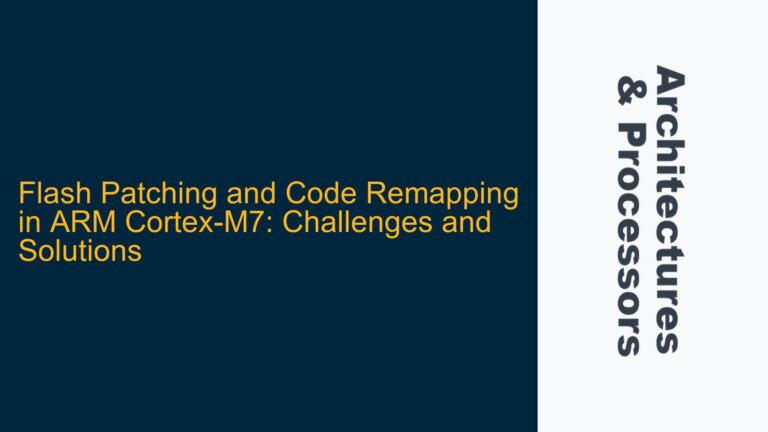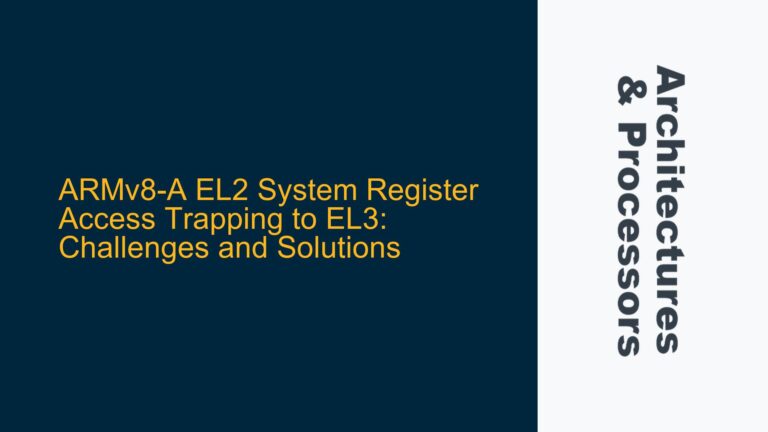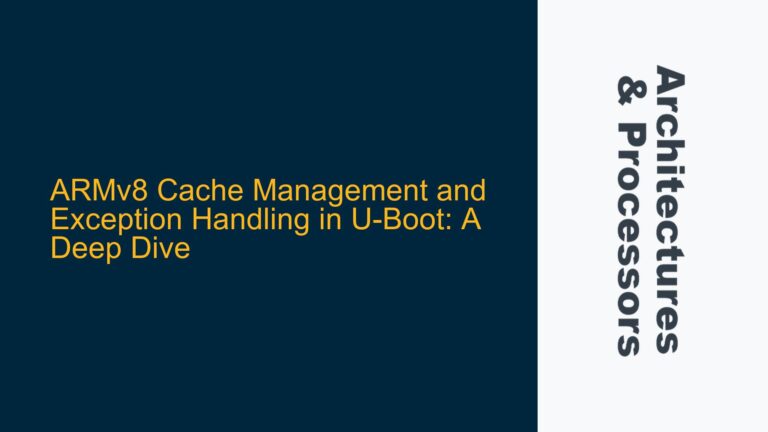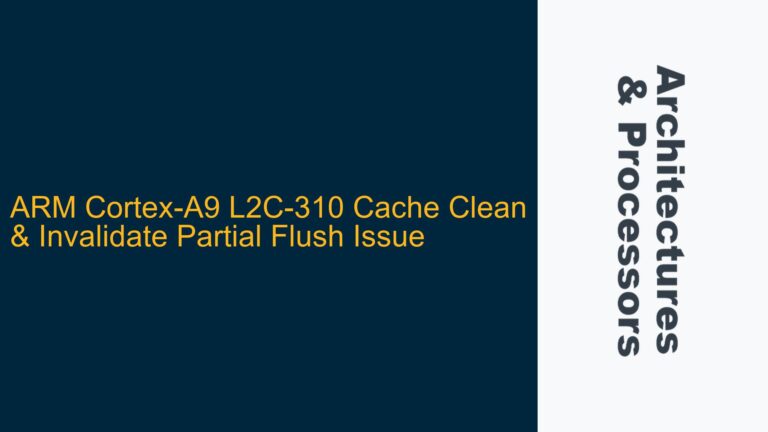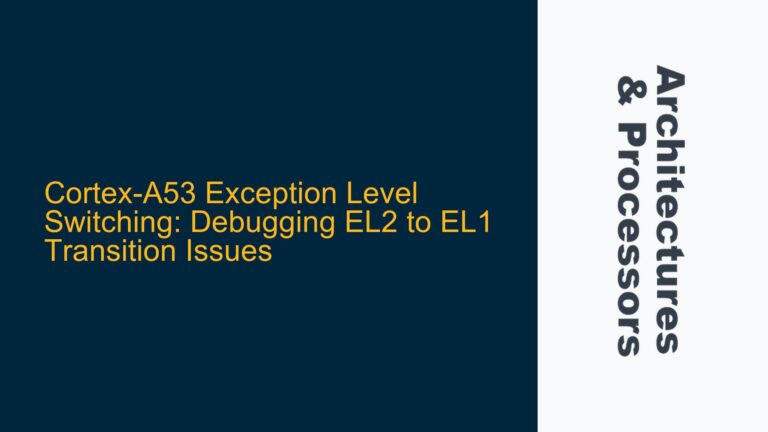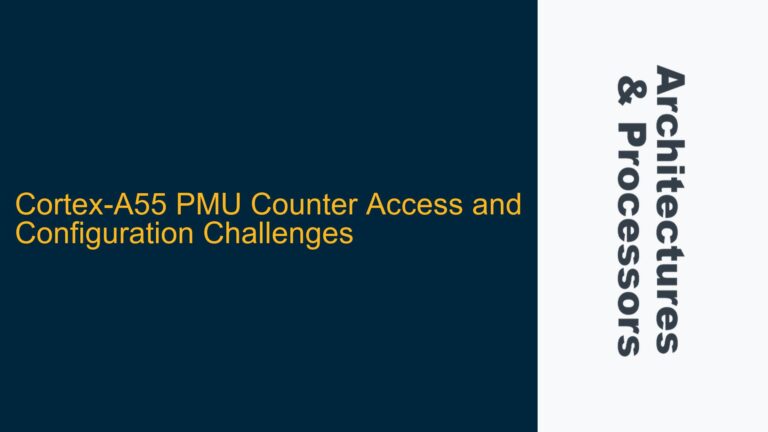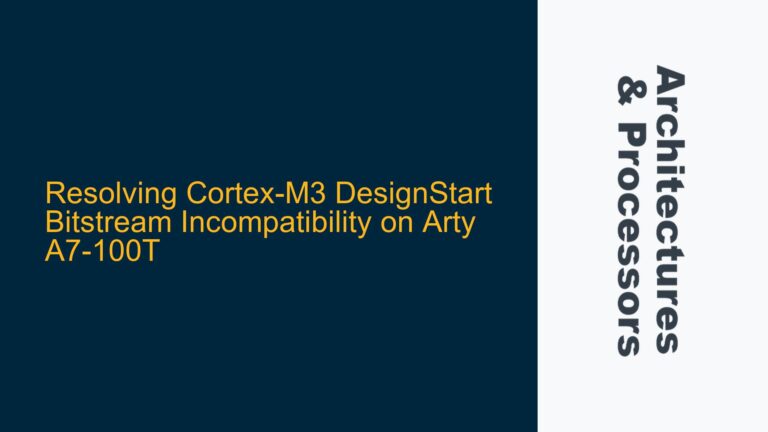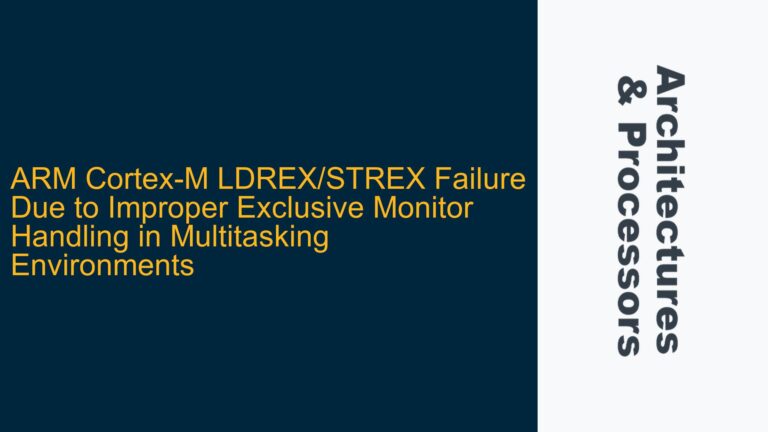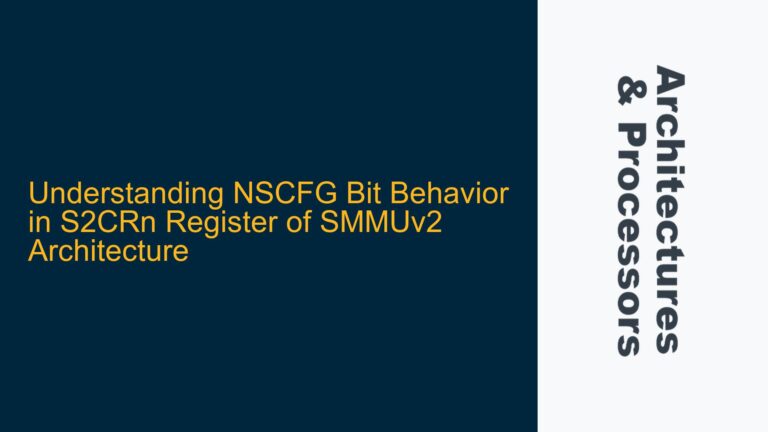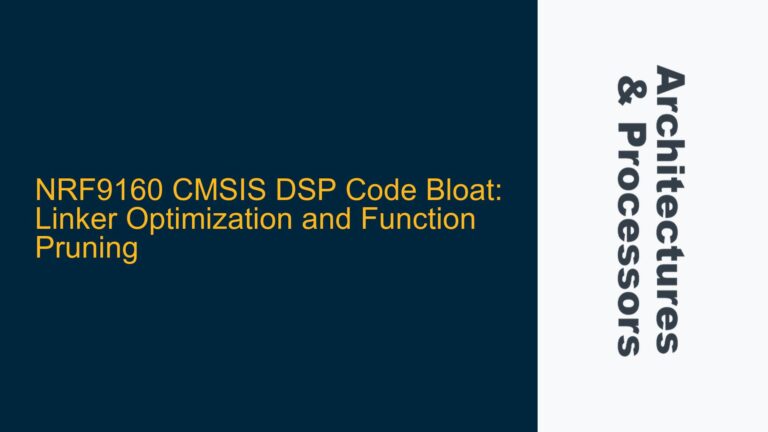Flash Patching and Code Remapping in ARM Cortex-M7: Challenges and Solutions
Flash Patching and Code Remapping in Cortex-M7: Understanding the Limitations The ARM Cortex-M7 processor, a high-performance embedded processor based on the ARMv7-M architecture, is widely used in applications requiring real-time processing and high computational throughput. One of the key features of the Cortex-M7 is its ability to execute code from tightly coupled memory (TCM) or…
